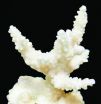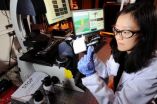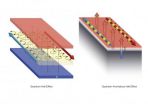(Press-News.org) TORONTO, ON – Have you ever wondered why you can remember things from long ago as if they happened yesterday, yet sometimes can't recall what you ate for dinner last night? According to a new study led by psychologists at the University of Toronto, it's because how much something means to you actually influences how you see it as well as how vividly you can recall it later.
"We've discovered that we see things that are emotionally arousing with greater clarity than those that are more mundane," says Rebecca Todd, a postdoctoral fellow in U of T's Department of Psychology and lead author of the study published recently in the Journal of Neuroscience. "Whether they're positive – for example, a first kiss, the birth of a child, winning an award – or negative, such as traumatic events, breakups, or a painful and humiliating childhood moment that we all carry with us, the effect is the same."
"What's more, we found that how vividly we perceive something in the first place predicts how vividly we will remember it later on," says Todd. "We call this 'emotionally enhanced vividness' and it is like the flash of a flashbub that illuminates an event as it's captured for memory."
By studying brain activity, Todd, psychology professor Adam Anderson and other colleagues at U of T, along with researchers at the University of Manchester and the University of California, San Diego found that the part of the brain responsible for tagging the emotional or motivational importance of things according to one's own past experience – the amygdala – is more active when looking at images that are rated as vivid. This increased activation in turn influences activity in both the visual cortex, enhancing activity linked to seeing objects, and in the posterior insula, a region that integrates sensations from the body.
"The experience of more vivid perception of emotionally important images seems to come from a combination of enhanced seeing and gut feeling driven by amygdala calculations of how emotionally arousing an event is," says Todd.
The researchers began by measuring the subjective experience of the vividness of perception. Taking pictures of scenes that were emotionally arousing and negative (scenes of violence or mutilation, or sharks and snakes baring their teeth), emotionally arousing and positive (mostly mild erotica), and neutral scenes (such as people on an escalator), they overlaid the images with varying amounts of "visual noise," which looked like the snow one would see on an old television screen. The pictures were then shown to study participants who were asked to say whether each image had the same, more, or less noise than a standard image with a fixed amount of noise.
"We found that while people were good at rating how much noise was on the picture relative to a standard, they consistently rated pictures that were emotionally arousing as less noisy than neutral pictures regardless of the actual level of noise," says Todd. "When a picture was rated as less noisy, then they actually saw the picture underneath more clearly, as if there is more signal relative to noise in the emotionally arousing picture. The subjective meaning of a picture actually influenced how clearly the participants saw it."
The researchers used additional tests to rule out other explanations of their findings, such as how 'noisy' a picture seems due to less vibrant colours or a more complex scene. They also used eye-tracking measures to eliminate the possibility that people look at emotionally arousing images differently, causing them to rate some as more vivid.
"We next wanted to see if this finding of emotionally enhanced vividness influenced memory vividness," says Todd. "So, in two different studies, we measured memory for the images, both right after seeing them in the first place and one week later."
In the first study, 45 minutes after they did the noise task, participants were asked to write down all the details they could about pictures they remembered seeing. How much detail they remembered was a measure of vividness. In the second study, participants were shown the pictures again one week later and asked if they remembered them and, if so, how vividly they remembered them from very vague to very detailed.
"Both studies found that pictures that were rated higher in emotionally enhanced vividness were remembered more vividly," says Todd.
Finally, the researchers used brain imaging measures to look at when the brain responded to emotionally enhanced vividness and what regions of the brain responded. Using electrophysiology (EEG) to measure the timing of activity in the cortex to see when the brain is sensitive to vividness, gave them a sense of whether this subjective vividness was more about seeing vividly, or thinking that it was more vivid when you're considering it after the fact.
"We found that the brain indexes vividness pretty quickly – about a 5th of a second after seeing a picture, which suggests it's about seeing and not just thinking," says Todd. "Emotion alters activity in the visual cortex, which in turn influences how we see."
The investigators also used functional magnetic resonance imaging (fMRI) to look at what brain regions were more active when people look at things that they perceive as more vivid because they're emotionally important. Again, they found amygdala, visual cortex, and interoceptive cortex activity went up with increased vividness.
"We know now why people perceive emotional events so vividly – and thus how vividly they will remember them – and what regions of the brain are involved," says Todd. "Knowing that there are going to be differences among people as to how strongly they show this emotionally enhanced vividness and the strength of the brain activation patterns underlying them, could be useful in predicting an individual's vulnerability to trauma, including intrusive memories experienced by people with post-traumatic stress disorder."
INFORMATION:
The findings are reported in the paper "Psychophysical and Neural Evidence for Emotion-Enhanced Perceptual Vividness". Funding for the research was provided by the U.S. National Institute for Mental Health and the Canadian Institutes of Health Research.
MEDIA CONTACTS:
Rebecca Todd
Department of Psychology
University of Toronto
416-978-0498
becket.todd@utoronto.ca
Sean Bettam
Communications, Faculty of Arts & Science
University of Toronto
416-946-7950
s.bettam@utoronto.ca
Psychologists link emotion to vividness of perception and creation of vivid memories
2012-08-20
ELSE PRESS RELEASES FROM THIS DATE:
'DNA wires' could help physicians diagnose disease
2012-08-20
PHILADELPHIA, Aug. 19, 2012 — In a discovery that defies the popular meaning of the word "wire," scientists have found that Mother Nature uses DNA as a wire to detect the constantly occurring genetic damage and mistakes that ― if left unrepaired ― can result in diseases like cancer and underpin the physical and mental decline of aging.
That topic ― DNA wires and their potential use in identifying people at risk for certain diseases ― is the focus of a plenary talk here today during the 244th National Meeting & Exposition of the American Chemical ...
Meddling with male malaria mosquito 'mating plug' to control an epidemic
2012-08-20
PHILADELPHIA, Aug. 19, 2012 — Using information about the unique mating practices of the male malaria mosquito ― which, unlike any other insect, inserts a plug to seal its sperm inside the female ― scientists are zeroing in on a birth-control drug for Anopheles mosquitoes, deadly carriers of the disease that threatens 3 billion people, has infected more than 215 million and kills 655,000 annually.
They reported today at the 244th National Meeting & Exposition of the American Chemical Society on development of an approach for screening substances that could ...
Inspired by genetics, chemistry finally takes hold of its own code
2012-08-20
Stefan Matile opts for sincerity. For him, if organic chemistry is often fond of simplifying its functional systems, it is because it is mostly impossible for it to construct and manage molecular architectures as complex as those produced with tremendous efficiency in nature. "It's a fact", says the UNIGE professor and NCCR Chemical Biology member, "that we are far from being able to match the genius of nature."
Where the complexity arises
The specialist attributes the genetic code to this genius of nature. "It is rather simple because it is based on four foundations—adenine, ...
Improving water quality can help save coral reefs
2012-08-20
Research from the University of Southampton and the National Oceanography Centre, Southampton has found that an imbalance of nutrients in reef waters can increase the bleaching susceptibility of reef corals.
Corals are made up of many polyps that jointly form a layer of living tissue covering the calcareous skeletons. They depend on single-celled algae called zooxanthellae, which live within the coral polyps.
The coral animal and the associated zooxanthellae depend on each other for survival in a symbiotic relationship, where the coral supplies the algae with nutrients ...
Artificial intelligence helps detect subtle differences in mutant worms
2012-08-20
Research into the genetic factors behind certain disease mechanisms, illness progression and response to new drugs is frequently carried out using tiny multi-cellular animals such as nematodes, fruit flies or zebra fish.
Often, progress relies on the microscopic visual examination of many individual animals to detect mutants worthy of further study.
Now, scientists have demonstrated an automated system that uses artificial intelligence and cutting-edge image processing to rapidly examine large numbers of individual Caenorhabditis elegans, a species of nematode widely ...
A new route to dissipationless electronics
2012-08-20
A team of researchers at RIKEN and the University of Tokyo has demonstrated a new material that promises to eliminate loss in electrical power transmission. The surprise is that their methodology for solving this classic energy problem is based upon the first realization of a highly exotic type of magnetic semiconductor first theorized less than a decade ago - a magnetic topological insulator.
Development of energy saving technologies is one of the central pursuits of modern science. From advancing alternative energy resources like wind and solar power to improving the ...
The wasp that never cries wolf
2012-08-20
European paper wasps (Polistes dominula) advertise the size of their poison glands to potential predators, finds a new study published in BioMed Central's open access journal Frontiers in Zoology. The brighter the colour, the larger the poison gland.
Aposematism is used by many different animals to warn potential predators that they are poisonous. Usually this takes the form of distinctive colouration or patterns which predators quickly learn to avoid. Paper wasps have conspicuous yellow and black patterns covering their bodies and researchers from University of Granada ...
Massachusetts butterflies move north as climate warms
2012-08-20
PETERSHAM, Mass. (August 19, 2012)---The authors of a Harvard study published today in Nature Climate Change gathered their data from an unlikely source—the trip accounts of the Massachusetts Butterfly Club. Over the past 19 years, the amateur naturalist group has logged species counts on nearly 20,000 expeditions throughout Massachusetts. Their records fill a crucial gap in the scientific record.
Once analyzed, the data show a clear trend. According to Greg Breed, lead author on the study and a post-doctoral fellow at the Harvard Forest in Petersham, Mass., "Over the ...
UCSB researchers demonstrate that 15=3x5 about half of the time
2012-08-20
(Santa Barbara, Calif.) — Computing prime factors may sound like an elementary math problem, but try it with a large number, say one that contains more than 600 digits, and the task becomes enormously challenging and impossibly time-consuming. Now, a group of researchers at UC Santa Barbara has designed and fabricated a quantum processor capable of factoring a composite number — in this case the number 15 — into its constituent prime factors, 3 and 5.
Although modest compared to a 600-digit number, the achievement represents a milestone on the road map to building a ...
Researchers assess stereotypes of immigrants and views on the impact of immigration
2012-08-20
DENVER — A new study led by the University of Cincinnati examines stereotypes of immigrants from four global regions and measures opinions of the impact of immigration on U.S. society. The researchers say their findings provide the most solid evidence yet that perceptions of the characteristics of Latin American immigrants in particular are strongly linked to beliefs about the impact of immigration, especially on unemployment, schools, and crime. The research will be presented at the 107th Annual Meeting of the American Sociological Association.
The study was conducted ...





